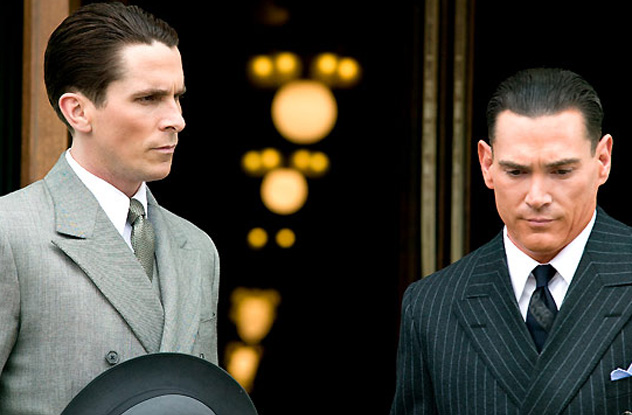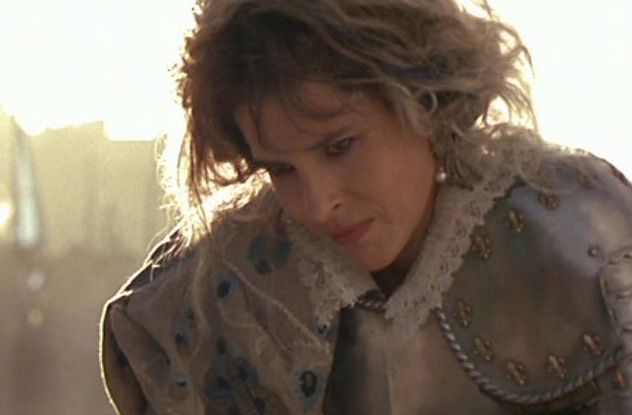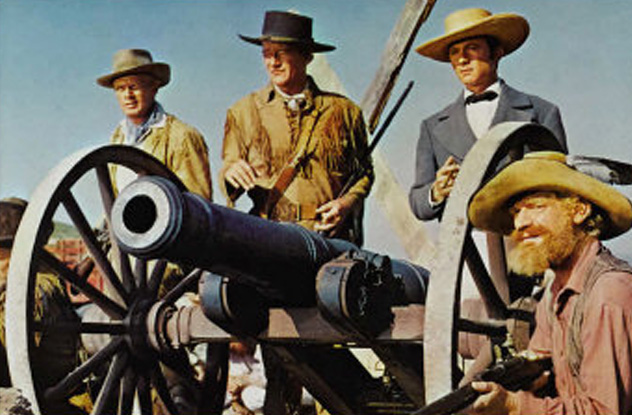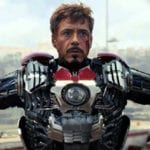 Animals
Animals  Animals
Animals  Weird Stuff
Weird Stuff 10 Weird Things People Used to Do at New Year’s
 Our World
Our World 10 Archaeological Discoveries of 2025 That Refined History
 Weird Stuff
Weird Stuff 10 Fascinating Facts You Might Not Know About Snow
 Miscellaneous
Miscellaneous Top 10 Things Crypto Was Supposed to Change & What Actually Did
 History
History 10 Huge Historical Events That Happened on Christmas Eve
 Music
Music 10 Surprising Origin Stories of Your Favorite Holiday Songs
 History
History 10 Less Than Jolly Events That Occurred on December 25
 Weird Stuff
Weird Stuff 10 Funny Ways That Researchers Overthink Christmas
 Politics
Politics 10 Political Scandals That Sent Crowds Into the Streets
 Animals
Animals 10 Species That Refused to Go Extinct
 Weird Stuff
Weird Stuff 10 Weird Things People Used to Do at New Year’s
 Our World
Our World 10 Archaeological Discoveries of 2025 That Refined History
Who's Behind Listverse?

Jamie Frater
Head Editor
Jamie founded Listverse due to an insatiable desire to share fascinating, obscure, and bizarre facts. He has been a guest speaker on numerous national radio and television stations and is a five time published author.
More About Us Weird Stuff
Weird Stuff 10 Fascinating Facts You Might Not Know About Snow
 Miscellaneous
Miscellaneous Top 10 Things Crypto Was Supposed to Change & What Actually Did
 History
History 10 Huge Historical Events That Happened on Christmas Eve
 Music
Music 10 Surprising Origin Stories of Your Favorite Holiday Songs
 History
History 10 Less Than Jolly Events That Occurred on December 25
 Weird Stuff
Weird Stuff 10 Funny Ways That Researchers Overthink Christmas
 Politics
Politics 10 Political Scandals That Sent Crowds Into the Streets
10 Fabricated Movie Death Scenes For Real-Life Figures
When Hollywood bases movies on true stories, historical accuracy is not their top priority. The facts don’t always make for the most compelling tale, so filmmakers use artistic license for maximum dramatic impact. However, sometimes, a movie will go so far as to completely fudge the truth about the death of a real-life individual. This is not a matter of getting a few minor details wrong. For the purpose of creating drama, these movies flat-out fabricate the circumstances surrounding the death of notable historical figures.
10The Untouchables (1987)
Frank Nitti
During the Prohibition era, federal agent Eliot Ness made it his mission to bring down Chicago crime kingpin Al Capone. To do so, he assembled a team of incorruptible law enforcement officers who were nicknamed “The Untouchables.” In 1931, they succeeded at sending Capone to prison for income tax evasion.
The Untouchables’ exploits were chronicled in a hit television series and an acclaimed 1987 film directed by Brian De Palma and starring Kevin Costner in the role of Ness. One of Capone’s top henchmen was a gangster named Frank “The Enforcer” Nitti. In the film, Nitti murders Ness’s partner. Ness finds out about this in the midst of Capone’s trial and pursues him to the courthouse roof. When Nitti brags about how he’s going to beat the rap, Ness =”http://www.biography.com/people/frank-nitti-20706151#chicago-outfit-years” target=”_blank”>throws him to his death onto a parked car.
In actuality, Frank Nitti was known for sending others to do his dirty work instead of committing any murders himself. He did not kill any of the Untouchables, and Ness didn’t get revenge by throwing an unarmed man off a rooftop.
Frank Nitti wound up getting convicted of tax evasion alongside his boss, Al Capone. While Capone received an 11-year sentence, Nitti only served 18 months. After his release, he became the front man for the Chicago Outfit, Capone’s organized crime syndicate.
In 1943, several members of the Outfit were indicted for extorting money from some of the biggest movie studios in Hollywood. On March 19, the same day a warrant was issued for his arrest, the 57-year-old Nitti was found dead at a railroad yard. He had committed suicide by shooting himself in the head. Since he was in a heavily intoxicated state, Nitti had to fire three shots at his head before one of the bullets finally killed him.
9The Fall Of The Roman Empire (1964) & Gladiator (2000)
Marcus Aurelius
Marcus Aurelius is one of the most famous Roman emperors as well as one of history’s great philosophers. His reign lasted 19 years.
There have been two notable cinematic portrayals of the renowned emperor. He was played by Alec Guinness in the 1964 epic The Fall of the Roman Empire and Richard Harris in the Academy Award–winning 2000 film Gladiator. In both films, Marcus is assassinated.
In Fall of the Roman Empire, Marcus is planning to announce a future successor to his throne (a fictional protagonist named Livius), but he is poisoned. The perpetrators are allies of Marcus’s son, Commodus, who hope to benefit once Commodus takes his father’s place. In Gladiator, Commodus himself betrays and murders the emperor. Once again, Marcus is planning to have a fictional protagonist (this time, Maximus) succeed him, so Commodus responds by strangling his father to death and ascending to the throne.
However, Marcus Aurelius was never the victim of an assassination plot, and his real-life death was not so dramatic. He died on March 17, 180 at the age of 58, and the cause of death was believed to be smallpox.
In both Roman Empire and Gladiator, Marcus has no intention of allowing Commodus to be his successor, which is the reason for his murder. In real life, Marcus let his son inherit his throne without incident and even named Commodus as co-emperor during the last three years of his life. Both of the aforementioned films end with Commodus being killed during a climactic duel with the fictional protagonist. In actuality, Commodus wound up being the victim of his own assassination plot and was strangled to death by a wrestler.
8Quills (2000)
Marquis de Sade & Madeleine LeClerc

Quills was a 2000 screen adaptation of the Obie Award–winning play by Doug Wright. It starred Geoffrey Rush as the notorious aristocrat Marquis de Sade.
The story covers the final years of the Marquis’s life, as he is incarcerated in an insane asylum at Charenton for writing controversial erotic works. He convinces Madeleine LeClerc (Kate Winslet), a young laundress at the asylum, to smuggle out manuscripts he has been secretly writing, and these are eventually published as his famous novel Justine. Madeleine is eventually murdered by another inmate at the asylum. After learning that the murderer was motivated by his writings, the Marquis commits suicide by swallowing a crucifix.
While Marquis de Sade and Madeleine LeClerc were closely acquainted during his incarceration at Charenton, none of the story’s details about their relationship or their deaths are true. LeClerc never smuggled manuscripts out of the asylum for Sade. In fact, Justine was published years before Sade was even incarcerated.
The Marquis did not commit suicide and died of natural causes on December 4, 1814 at the age of 74. The murder of Madeleine LeClerc is a complete fabrication, and she was still alive when Sade died. Even though Kate Winslet was in her mid-twenties when she played the role, LeClerc was only 18 years old at the time of the Marquis’s death.
In the film, Sade feels that the best way to demonstrate his love for Madeleine is to never have sex with her. In real life, LeClerc had a sexual relationship with the Marquis for years, and their first intimate encounter is believed to have happened when she was only 15.
7Public Enemies (2009)
George “Baby Face” Nelson & Homer Van Meter

Released in 2009, the Michael Mann–directed film Public Enemies chronicles the exploits of John Dillinger (Johnny Depp), who was America’s most famous outlaw gangster during the 1930s. The story follows the attempts of FBI agent Melvin Purvis (Christian Bale) to stop Dillinger. The notorious bank robber’s run finally comes to an end when he is gunned down in front of Chicago’s Biograph Theater on July 22, 1934.
Many of Dillinger’s real-life criminal associates are featured in Public Enemies, including George “Baby Face” Nelson and Homer Van Meter. Halfway through the film, Purvis and his men track down Dillinger’s gang to the Little Bohemia Lodge in Wisconsin. While Dillinger manages to make a successful escape, Van Meter and Nelson are both fatally gunned down by Purvis.
While the FBI’s raid on the Little Bohemia Lodge did take place on April 20, 1934, George “Baby Face” Nelson and Homer Van Meter actually made a successful escape that night. In fact, neither man died until after John Dillinger’s death, and they were not gunned down by Melvin Purvis.
On August 23, Van Meter was ambushed by police after being lured into a trap by his mistress. He was shot to death by four officers on a street in St. Paul, Minnesota. On November 27, Nelson got into a gunfight with federal agents Samuel Cowley and Herman Hollis on a rural Illinois highway, and all three men were fatally wounded. In spite of being shot 17 times, Nelson escaped the scene and was in the company of his wife and a priest when he died later that night.
6Gunfight At The O.K. Corral (1957)
Johnny Ringo
The most famous gunfight in the history of the American West is probably the Gunfight at the O.K. Corral. It took place in Tombstone, Arizona on October 26, 1881 and involved iconic lawman Wyatt Earp, his three brothers, and their friend, Doc Holliday, taking on a notorious gang of outlaws known as “The Cowboys.”
The Gunfight at the O.K. Corral has been depicted in numerous westerns, including a popular 1957 film of the same name. In the movie, one of the main antagonists is outlaw Johnny Ringo (John Ireland), who develops a heated rivalry with Doc Holliday (Kirk Douglas). During the climactic gunfight, all six members of the Cowboys are killed, including Ringo, who is shot to death by Holliday.
In reality, there were five members of the Cowboys present in Tombstone that day, and only three of them died in the gunfight. Johnny Ringo was not shot by Doc Holliday because he was not even there to begin with.
While Ringo was associated with the Cowboys, he was visiting his sisters in California at the time of the gunfight and lived for several more months afterward. The rivalry between Ringo and Holliday did not even begin until January 1882, when the two men had a heated confrontation that nearly escalated into a gunfight.
One month later, Morgan Earp was murdered, and Ringo became a target of the Earp family, who suspected that he was involved. On July 14, Ringo was found dead in West Turkey Creek Valley with a bullet hole in his head and his revolver in his hand. Even though it’s generally accepted that Ringo committed suicide, there has always been some suspicion that he was killed by Wyatt Earp as revenge for his deceased brother.
5Titanic (1997)
William Murdoch
When James Cameron’s historical drama Titanic was released into theaters in 1997, it smashed box office records and would remain the highest-grossing film of all time for 12 years. The movie depicted the 1912 sinking of the RMS Titanic and surrounded it with a love story involving two fictional characters. However, most of the film’s background characters are actual passengers and crew members from the Titanic.
One of them is First Officer William Murdoch, who was in charge of the bridge when the ship struck the iceberg. At one point in the movie, Murdoch accepts a bribe from fictional villain Cal Hockley for a spot in a lifeboat. When panic ensues and a mob starts rushing the boats, Murdoch loses control and fatally shoots two passengers. Murdoch then commits suicide by shooting himself in the head. His body falls overboard.
Since Murdoch’s body was never actually found, there has always been some controversy about his death. Some surviving witnesses reported seeing an officer shoot a passenger before committing suicide, and rumors spread that this officer was Murdoch. However, surviving officers from the Titanic disputed this, claiming that they saw Murdoch work diligently to load as many people as possible into the lifeboats until the ship sank. He also reportedly tossed deckchairs to passengers in the water before he was swept overboard.
Murdoch was ultimately hailed as a hero for saving lives, so residents of Murdoch’s hometown of Dalbeattie, Scotland were none too pleased when Titanic showcased him accepting a bribe, shooting passengers, and committing suicide. In response, the vice president of 20th Century Fox personally traveled to Dalbeattie to issue a formal apology about the film’s portrayal of Murdoch and made a donation to his memorial fund.
4Gangster Squad (2013)
Conwell Keeler
The 2013 film Gangster Squad takes place in Los Angeles during the late 1940s, when the city is overrun by crime kingpin Mickey Cohen (Sean Penn). The chief of police responds by putting together a secret team of guerrilla cops nicknamed the “Gangster Squad,” who are willing to work outside the law to bring Cohen down. One of these cops is wiretap expert Conwell Keeler.
In the film, Cohen figures out that the Squad has planted a bug in his home, so he deliberately leaks false information to lure them into an ambush. Cohen’s bodyguard uses the opportunity to track down Keeler and strangle him to death. This incident motivates the Squad to raid Cohen’s hotel and arrest him for murder. Like Al Capone, Mickey Cohen was never actually indicted for murder and went to prison for the far less dramatic crime of tax evasion.
Gangster Squad takes a lot of dramatic liberties, but its most blatant involves the death of Conwell Keeler. Not only was Cohen not responsible for Keeler’s murder, but the wiretap expert was not actually murdered at all. In fact, he went on to live for over 60 more years and nearly made it to the age of 100.
Shortly before his death, Keeler was interviewed and shared his experiences for Gangster Squad: Covert Cops, the Mob and the Battle for Los Angeles, the 2011 book on which the movie is based. Since Mickey Cohen died in 1976, Conwell Keeler has the unique distinction of outliving the real-life figure responsible for his fictional murder.
3Elizabeth (1998)
Mary Of Guise

The 1998 historical drama Elizabeth chronicles the early years in the reign of Queen Elizabeth I of England (Cate Blanchett), who was crowned in 1558. Much of the story deals with the numerous plots to remove her from the throne. One of Elizabeth’s chief rivals is Mary of Guise, the Queen of Scotland.
When Mary increases the French garrison in Scotland, Elizabeth considers this an act of war and attempts an invasion. Elizabeth’s army is defeated, so her most trusted advisor, Sir Francis Walsingham (Geoffrey Rush), travels to Scotland to negotiate with Mary. At first, it looks like Walsingham is planning to betray his Queen, but Mary is found dead the following morning. The implication is that Walsingham assassinated her and was acting on unofficial orders from Queen Elizabeth.
While Mary of Guise was definitely a rival of Queen Elizabeth, she was not assassinated and certainly was not killed by Sir Francis Walsingham. In fact, it’s unlikely that Walsingham ever met Mary at all.
Mary of Guise died at Edinburgh Castle on June 11, 1560 at the age of 44. While her exact cause of death was never conclusively determined, it’s believed that she was suffering from dropsy, a condition involving an abnormal accumulation of interstitial fluids. In the months leading up to her death, Mary’s legs had swollen up a great deal. This is a common symptom of dropsy and likely caused Mary to suffer a fatal heart attack. Whatever the circumstances, there was never any serious suspicion of foul play, so neither Queen Elizabeth I nor Sir Francis Walsingham were responsible for the death of Mary of Guise.
2The Alamo (1960)
Colonel James Fannin

Featuring such stars as John Wayne, Richard Widmark, and Laurence Harvey, The Alamo was a 1960 historical epic about the famous battle of the same name. From February 23 until March 6, 1836, the Texan and Mexican armies engaged in a standoff at the Alamo Mission until Mexican troops moved in and killed everyone inside. The event was a major turning point in the Texas Revolution, as many vengeful Texans felt compelled to join the army, flipping the conflict in their favor.
A key plot point in The Alamo involves Colonel James Fannin, one of the leaders in the Revolution. Even though Fannin is never shown onscreen, the characters at the Alamo believe that victory will be attained once Fannin and his reinforcements arrive. However, morale is quickly destroyed once they receive word that Fannin and his troops were ambushed and slaughtered in the town of Goliad while on their way to the Alamo.
The Alamo is notorious for being riddled with historical inaccuracies, so much so that the film’s historical consultants demanded their names be removed from the credits. One of the story’s biggest dramatic liberties involves the death of Colonel Fannin, an event that did not actually take place until three weeks after the Battle of the Alamo ended.
Fannin did attempt an expedition to bring reinforcements to the Alamo, but they were not attacked at all. Shortly after embarking on their journey, one of their wagons broke down. Following a disastrous attempt to cross the Guadalupe River, Fannin and his men decided that a rescue operation simply wouldn’t work and turned back. The deaths of Colonel Fannin and his troops did not take place until they were executed in Goliad on March 27.
1Donnie Brasco (1997)
Benjamin “Lefty” Ruggiero
The 1997 film Donnie Brasco tells the story of FBI agent Joseph Pistone (Johnny Depp), who spends many years on a deep undercover operation after infiltrating a crew in the Bonnano crime family. Going under the alias “Donnie Brasco,” Pistone works alongside gangsters Benjamin “Lefty” Ruggiero (Al Pacino) and Dominick “Sonny Black” Napolitano (Michael Madsen), developing a close friendship with Lefty. However, after “Donnie” is exposed as an undercover agent, Lefty knows his days are numbered because he personally vouched for the man.
In his final scene, Lefty accepts a phone call to attend a meeting with his fellow mobsters. He leaves behind some personal items for his wife before exiting his apartment. Even though his death is not shown onscreen, the implication is that Lefty will not return from this meeting alive.
In real life, even though the mob did put out a contract on Benjamin “Lefty” Ruggiero for allowing an undercover agent to breach their organization, the FBI arrested Ruggiero before he could be whacked. Ruggiero refused to cooperate with authorities, so the mob canceled their contract on him. Ruggiero was sentenced to 20 years in prison. After being paroled, he died of lung cancer on November 24, 1994.
In the movie, we never see what happens to the character of Dominick “Sonny Black” Napolitano, but the real man suffered fictional Lefty’s fate. On August 17, 1981, Napolitano left some personal possessions with a bartender before disappearing. One year later, his bullet-ridden body was found with his hands cut off. Napolitano’s death was the mob’s retribution for letting Joseph Pistone infiltrate their ranks.
Robin Warder is a budding Canadian screenwriter who has used his encyclopedic movie knowledge to publish numerous articles at Cracked.com. He is also the co-owner of a pop culture website called The Back Row and recently worked on a sci-fi short film called Jet Ranger of Another Tomorrow. Feel free to contact him here.


![Top 10 Most Important Nude Scenes In Movie History [Videos] Top 10 Most Important Nude Scenes In Movie History [Videos]](https://listverse.com/wp-content/uploads/2019/09/sharonstone-150x150.jpg)





